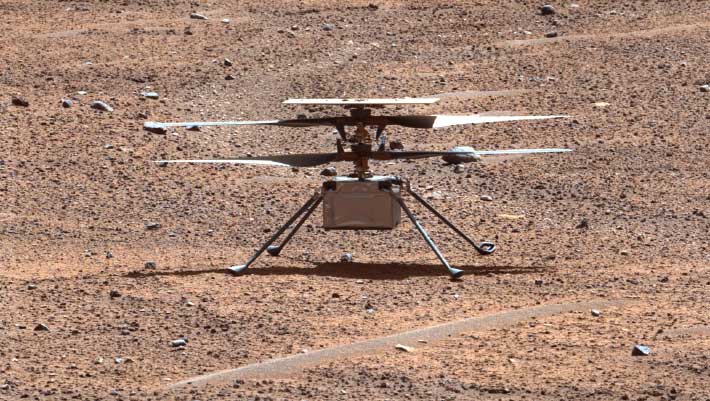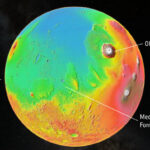NASA’s Ingenuity helicopter made history by achieving the first powered, controlled flight on another planet on April 19, 2021. Despite initial plans for up to five flights, the helicopter has exceeded expectations and executed an impressive 72 flights on Mars. While Ingenuity remains upright and in communication with ground controllers, imagery of its January 18, 2024 flight indicates one or more of its rotor blades sustained damage during landing, and it is no longer capable of flight.
This enhanced color view of NASA’s Ingenuity helicopter was generated using data collected by the Perseverance rover on August 2, 2023. Image credit: NASA.
“The historic journey of Ingenuity, the first aircraft on another planet, has come to end,” said NASA Administrator Bill Nelson.
“That remarkable helicopter flew higher and farther than we ever imagined and helped NASA do what we do best — make the impossible, possible.”
“Through missions like Ingenuity, NASA is paving the way for future flight in our Solar System and smarter, safer human exploration to Mars and beyond.”
Ingenuity landed on Mars February 18, 2021, attached to the belly of NASA’s Perseverance rover and first lifted off the Martian surface on April 19, proving that powered, controlled flight on Mars was possible.
After notching another four flights, it embarked on a new mission as an operations demonstration, serving as an aerial scout for Perseverance scientists and rover drivers.
In 2023, the helicopter executed two successful flight tests that further expanded the team’s knowledge of its aerodynamic limits.
“Ingenuity is an exemplar of the way we push the boundaries of what’s possible every day,” said Dr. Laurie Leshin, director of NASA’s Jet Propulsion Laboratory.
“I’m incredibly proud of our team behind this historic technological achievement and eager to see what they’ll invent next.”
Ingenuity’s team planned for the helicopter to make a short vertical flight on January 18, 2024 to determine its location after executing an emergency landing on its previous flight.
The data shows that, as planned, the helicopter achieved a maximum altitude of 12 m (40 feet) and hovered for 4.5 seconds before starting its descent at a velocity of 1 m/s (3.3 feet per second).
However, about 1 m (3 feet) above the surface, Ingenuity lost contact with the rover, which serves as a communications relay for the rotorcraft.
The following day, communications were reestablished and more information about the flight was relayed to ground controllers at NASA’s Jet Propulsion Laboratory.
Imagery revealing damage to the rotor blade arrived several days later.
The cause of the communications dropout and the helicopter’s orientation at time of touchdown are still being investigated.
With flight operations now concluded, the Ingenuity team will perform final tests on helicopter systems and download the remaining imagery and data in Ingenuity’s onboard memory.
The Perseverance rover is currently too far away to attempt to image the helicopter at its final airfield.
“It’s humbling Ingenuity not only carries onboard a swatch from the original Wright Flyer, but also this helicopter followed in its footsteps and proved flight is possible on another world,” said Ingenuity project manager Teddy Tzanetos, a researcher at NASA’s Jet Propulsion Laboratory.
“The Mars helicopter would have never flown once, much less 72 times, if it were not for the passion and dedication of the Ingenuity and Perseverance teams.”
“History’s first Mars helicopter will leave behind an indelible mark on the future of space exploration and will inspire fleets of aircraft on Mars — and other worlds — for decades to come.”




